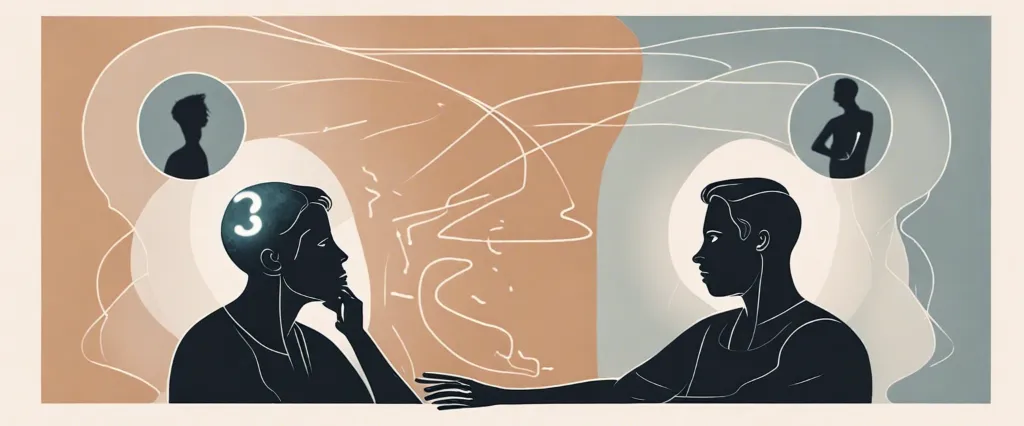In “The Power of a Positive No” by William Ury, readers are introduced to a transformative approach for effectively asserting oneself while preserving relationships. Ury, an internationally renowned negotiation expert and co-founder of the Harvard Negotiation Project, provides invaluable insights on how to say “no” assertively, without causing harm or damaging important connections. With a wealth of experience in mediation and conflict resolution, Ury presents a practical guide that empowers individuals to navigate difficult conversations with confidence, ultimately fostering positive outcomes and maintaining positive relationships.
Chapter 1: The Power of Saying No
In Chapter 1 of “The Power of a Positive No” by William Ury, the author introduces the concept of saying no as a crucial skill in life and decision-making. He asserts that the ability to say no is not only essential for setting healthy boundaries, but also for creating meaningful and positive change in personal and professional relationships.
Ury highlights that people often struggle with saying no due to various reasons, such as the fear of conflict, the desire to please others, or the belief that saying no is rude or selfish. However, he argues that learning to say no effectively can enable individuals to express their true needs and values without causing unnecessary harm to others.
The author introduces a three-step framework called the Aikido method, inspired by the Japanese martial art. This method teaches individuals to deflect negativity and transform conflict into positive dialogue. The first step, “yes-ing the yes,” emphasizes the importance of starting the conversation by acknowledging the common ground and finding areas of agreement. This helps to establish a positive and respectful tone.
The second step, “no-ing the no,” teaches individuals to assert their boundaries and core interests without being adversarial. Ury emphasizes the significance of conveying a firm and unequivocal no, while ensuring it does not come across as antagonistic or dismissive.
The final step, “yes-ing the yes-no,” focuses on finding a solution or compromise that satisfies both parties’ interests. Ury suggests that by concentrating on the shared goals and exploring alternative options, individuals can reach win-win outcomes.
In summary, Chapter 1 of “The Power of a Positive No” emphasizes the importance of learning to say no effectively. The Aikido method presented by the author provides a constructive approach to say no while maintaining positive relationships and achieving mutually beneficial outcomes.
Chapter 2: Discovering Your Inner Motivation
Chapter 2 of “The Power of a Positive No” by William Ury delves into the importance of discovering one’s inner motivation to effectively say no in various situations. Ury highlights that understanding our underlying motives can help us articulate our needs and desires firmly and compassionately.
The chapter starts by explaining that saying no is not about being negative or selfish, but rather about setting healthy boundaries and asserting our individual values. Ury emphasizes that having a positive no means saying yes to ourselves and our priorities while still respecting others.
To discover our inner motivation, Ury suggests identifying our core values and determining what truly matters to us. This involves examining our personal needs, interests, and passions, which may have been overlooked or silenced over time. By reconnecting with our inner motivation and aligning it with our actions, we can find the courage to say no when necessary.
The author emphasizes self-reflection and self-awareness as crucial tools for understanding our motivations. Ury suggests asking ourselves questions such as: What do I really want? What are my priorities? What are my deepest values? By introspecting and understanding our true desires, we gain clarity and confidence in expressing our needs without guilt or apology.
Furthermore, Ury advises the reader to distinguish between our primary and secondary interests. Our primary interests are the underlying human needs that drive us, such as security, autonomy, or recognition. Secondary interests, on the other hand, are the specific positions or solutions we propose to meet those primary needs. By acknowledging the difference, we can focus on addressing the primary interests and finding mutually beneficial solutions.
Overall, the chapter emphasizes the significance of introspection and self-awareness to uncover our inner motivation, enabling us to articulate a positive no that respects both ourselves and others. Understanding our core values and primary interests helps us maintain healthy boundaries while fostering constructive communication and collaboration.
Chapter 3: Establishing Strong Boundaries
Chapter 3 of The Power of a Positive No by William Ury focuses on the importance of establishing strong boundaries in our personal and professional lives. Ury emphasizes that setting boundaries is essential for maintaining our integrity, protecting our time and energy, and preventing others from taking advantage of us.
The chapter begins by explaining the concept of a “zone of acceptance,” which refers to the range of offers, requests, or behaviors that we find tolerable. Ury encourages readers to be aware of their zone of acceptance and to consciously expand it to avoid being too rigid or too compromising.
Ury then introduces the three steps of setting a strong boundary: stating your limit, recognizing your options, and sticking with your limit. First, he advises being clear and direct in communicating your limits to others, using “no” as a complete sentence. Second, he advises exploring alternative options to reach a mutually beneficial solution, rather than just rejecting the request outright. This helps to maintain positive relationships and find win-win scenarios. Lastly, Ury emphasizes the importance of sticking with your limit and not allowing others to manipulate or guilt-trip you into changing your boundary.
The chapter also addresses common challenges in boundary setting, such as fear of conflict, guilt, or the desire to be liked by others. Ury provides strategies to overcome these challenges, such as reframing conflict as an opportunity for growth and learning, recognizing that saying no is not inherently selfish, and realizing that a positive no can actually strengthen relationships by promoting honesty and respect.
By establishing strong boundaries, Ury argues that we can protect our time, energy, and personal values, while still maintaining positive relationships and finding mutually satisfying solutions.
Chapter 4: Using the Three A’s Principle

Chapter 4 of “The Power of a Positive No” introduces the Three A’s Principle as a transformative approach to assertiveness and effective communication. William Ury emphasizes the importance of knowing and asserting our bottom line, finding common ground, and building constructive relationships even when saying no.
The first A in the Three A’s Principle stands for Assert Yourself. Ury highlights the significance of knowing and clearly expressing our limits, needs, and concerns when faced with a request, without becoming aggressive or passive. By mastering assertiveness, individuals can swiftly communicate their position, stand firm, and prevent potential resentment or guilt associated with saying no.
The second A is about Accommodate the Request. This step encourages the initiator to seek possible alternatives and solutions that can satisfy their needs as well as the other person’s. By demonstrating willingness to find common ground and explore options, both parties can benefit from creative problem-solving and preserve the relationship.
The final A, Advance Your Relationship, emphasizes the importance of building or strengthening the ongoing relationship with the other person, regardless of the outcome. Ury suggests that by focusing on constructive dialogue, active listening, and respectfully acknowledging the other person’s perspective, individuals can foster stronger connections and maintain trust even after saying no.
By employing the Three A’s Principle, individuals can effectively say no while still preserving relationships and finding mutual benefits. It provides a framework for navigating difficult conversations, understanding the needs of both parties, and fostering a positive and respectful environment for resolving conflicts. Ultimately, this approach empowers individuals to effectively communicate their boundaries and assert themselves without undermining the relationships they value.
Chapter 5: From Refusal to Cooperation
Chapter 5: From Refusal to Cooperation, in the book “The Power of a Positive No” by William Ury, focuses on transforming a refusal into an opportunity for collaboration and finding common ground. Ury presents a strategy called the Negotiation Jujitsu, which empowers individuals to assert their own interests without damaging relationships.
The chapter begins by emphasizing that saying no is not enough; it is equally important to communicate a positive yes. Instead of simply rejecting a proposal, one should propose an alternative solution that meets both parties’ needs. This approach helps create trust and openness, enabling constructive dialogue.
Ury introduces four steps to practicing Negotiation Jujitsu. First, one needs to listen carefully to understand the underlying interests and concerns of the other party. By asking open-ended questions, one can foster open communication channels and build empathy.
Next, Ury advises “step to the side,” which involves separating the individual from the problem. This allows both parties to focus on the issue at hand, rather than getting entangled in personal conflict. By reframing the problem as a shared challenge, one can encourage collaboration.
The third step is to shift the focus from positions to interests. Ury argues that interests are what truly motivate people, and finding common interests increases the chances of reaching a mutually beneficial agreement. By brainstorming together, both parties can explore creative solutions that address their respective concerns.
Lastly, Ury suggests inventing options for mutual gain. By searching for integrative solutions, where both parties can gain something, rather than a win-lose scenario, negotiations become more productive and sustainable. This approach allows for creative problem-solving that can benefit everyone involved.
Ultimately, the chapter emphasizes the importance of transforming refusal into cooperation by adopting a positive no. With the help of Negotiation Jujitsu, individuals can navigate difficult conversations, maintain relationships, and achieve mutually beneficial outcomes.
Chapter 6: Creating Mutually Beneficial Relationships
Chapter 6: Creating Mutually Beneficial Relationships of the book “The Power of a Positive No” by William Ury focuses on the importance of building mutually beneficial relationships when saying no. Ury emphasizes that saying no is not about rejecting or opposing, but about setting boundaries and creating opportunities for collaboration.
Ury introduces the concept of the “interdependence paradox,” which states that the more independent and self-sufficient we become, the more we rely on others. He stresses that it is vital to recognize and appreciate this interdependence in our relationships, whether personal or professional.
The chapter provides a framework for creating mutually beneficial relationships by highlighting the six A’s: Attention, Appreciation, Affiliation, Acknowledgment, Acceptance, and Autonomy. Ury explains that by applying these principles, we can foster healthy relationships based on mutual respect, understanding, and cooperation.
Attention involves actively listening to the other person’s needs, concerns, and interests. Appreciation requires recognizing and valuing their contributions and perspectives. Affiliation focuses on finding common ground and shared goals, strengthening the connection between both parties.
Acknowledgment means acknowledging the other person’s feelings, even if we don’t agree with their position. Acceptance involves understanding and accepting our own limits and boundaries while respecting those of the other person. Autonomy emphasizes giving autonomy and agency to the other person, allowing them to make their own choices and decisions.
By incorporating these principles into our interactions, Ury suggests that we can transform potential conflicts into opportunities for collaboration. By seeking win-win solutions and genuinely understanding the needs of others, we create a positive environment where mutually beneficial outcomes can be achieved.
In conclusion, Chapter 6 of “The Power of a Positive No” teaches us that saying no doesn’t have to be a negative or confrontational experience. By building relationships based on the principles of attention, appreciation, affiliation, acknowledgment, acceptance, and autonomy, we can navigate conflicts and negotiations with a focus on collaboration and mutual benefit.
Chapter 7: Dealing with Conflict and Dilemmas
Chapter 7 of “The Power of a Positive No” by William Ury explores strategies for effectively dealing with conflict and dilemmas. Ury emphasizes the importance of maintaining a positive approach throughout the negotiation process, even when facing difficult situations.
The chapter begins by outlining the three key obstacles that prevent people from handling conflicts and dilemmas successfully: apathy, violence, and deception. Ury stresses that these obstacles need to be confronted and overcome using a positive and assertive approach.
To navigate conflicts and dilemmas successfully, Ury introduces the “Triple-A Approach.” The first A stands for Accurate Perception, which involves understanding the situation and factors contributing to the conflict or dilemma. This includes actively listening to all parties involved and seeking to understand their viewpoints and underlying interests.
The second A refers to Assertiveness, which Ury explains as the ability to clearly and confidently express one’s needs and boundaries without being aggressive. He encourages readers to articulate their positions calmly and firmly, without diminishing or attacking the other party.
Lastly, the final A stands for Active Engagement. Ury emphasizes the importance of actively engaging with the conflict or dilemma rather than avoiding it. This involves taking responsibility, initiating dialogue, and seeking mutually beneficial resolutions.
Throughout the chapter, Ury provides practical tools and techniques to implement the Triple-A Approach. This includes identifying common objectives, exploring alternative options, and discovering shared interests. Ury also emphasizes the importance of finding creative solutions that address everyone’s concerns.
In summary, Chapter 7 of “The Power of a Positive No” provides valuable guidance on handling conflicts and dilemmas effectively. By employing the Triple-A Approach and maintaining a positive and assertive mindset, individuals can navigate conflicts with integrity and achieve mutually beneficial outcomes.

Chapter 8: Practicing Positive Communication Skills
Chapter 8 of The Power of a Positive No by William Ury focuses on practicing positive communication skills. Ury emphasizes the importance of being able to communicate effectively in order to achieve positive outcomes and maintain strong relationships.
The chapter begins with the concept of speaking with respect and gratitude. Ury explains that by acknowledging the other person’s perspective and expressing gratitude for their input, a positive and constructive conversation can be fostered. It is crucial to approach the conversation with a mindset of collaboration rather than confrontation.
Ury also emphasizes the significance of active listening. Truly hearing and understanding the other person’s concerns and needs is vital for finding mutually beneficial solutions. He suggests asking clarifying questions and summarizing their points to ensure comprehension and demonstrate that their thoughts are being valued.
Another key communication skill discussed is using “I” statements instead of “you” statements. By expressing feelings and needs using “I” statements, it allows for more open and non-confrontational dialogue. This helps avoid blaming or accusing the other person, which often leads to defensiveness and escalation.
Furthermore, Ury introduces the power of using curiosity and asking open-ended questions. By asking questions, it demonstrates a genuine interest in understanding the other person’s perspective and encourages them to explore potential solutions.
Lastly, Ury introduces the importance of empathy and affirming the other person’s feelings. Acknowledging their emotions and concerns helps create a safe space for meaningful conversation. It is crucial to remember that emotions play a significant role in decision-making, and addressing them positively can lead to better outcomes.
Overall, Chapter 8 emphasizes the significance of positive communication skills in building strong relationships and finding mutually beneficial solutions. The author provides practical techniques such as respectful communication, active listening, using “I” statements, asking open-ended questions, and expressing empathy. By employing these skills, individuals can navigate difficult conversations with grace and increase the likelihood of positive outcomes.
After Reading
In “The Power of a Positive No” by William Ury, the author offers valuable insights and practical strategies for saying no effectively, maintaining relationships, and achieving mutual understanding. Ury emphasizes the importance of setting boundaries, understanding our true interests, and approaching conflicts with empathy and respect. By harnessing the power of a positive no, we can protect our own interests while still seeking mutually acceptable solutions. Ury’s book serves as an invaluable guide for both personal and professional growth, empowering readers to assert themselves confidently and navigate challenging situations with grace.
1. Crucial Conversations: Tools for Talking When Stakes Are High” by Kerry Patterson, Joseph Grenny, Ron McMillan, Al Switzler – This book provides practical tips and tools for effectively handling crucial conversations and resolving conflicts. It emphasizes the power of dialogue and how to navigate difficult situations with positive outcomes.
2. Difficult Conversations: How to Discuss What Matters Most” by Douglas Stone, Bruce Patton, Sheila Heen – Similar to “The Power of a Positive No,” this book delves into the art of difficult conversations. It guides readers on how to express their needs and interests while respecting those of others, ultimately leading to better outcomes in personal and professional relationships.
3. “Negotiating the Impossible: How to Break Deadlocks and Resolve Ugly Conflicts (Without Money or Muscle)” by Deepak Malhotra – This book focuses on navigating complex negotiations and conflicts with unyielding counterparts. By offering unconventional solutions and strategies, Malhotra helps readers identify untapped opportunities for resolution and negotiation.
4. Getting to Yes: Negotiating Agreement Without Giving In” by Roger Fisher, William Ury, Bruce Patton – William Ury, one of the authors of “The Power of a Positive No,” also co-authored this classic negotiation book. “Getting to Yes” provides a framework for principled negotiation, emphasizing win-win approaches, collaboration, and effective communication to reach satisfactory agreements.
5. “Buckle Up: Talking Your Way Through Negotiations” by Wayne E. Nemeroff and Jay B. Knutson – This book delves into the psychology behind negotiation and shows readers how to understand others’ perspectives and emotions during high-stakes conversations. It offers practical techniques and frameworks to improve communication, empathy, and problem-solving skills to achieve positive outcomes.




